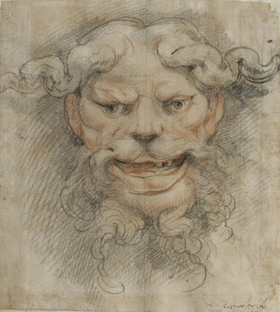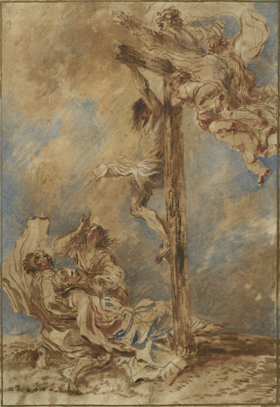october 12, 2008–january 4, 2009
ABOUT THE EXHIBITION
The grand narrative tradition ignited during the Renaissance remained central to the visual arts in Italy until the modern period. Dramatic, multifigure compositions portraying mythological, religious, or historical events were considered the highest calling for painters. Only these subjects, it was thought, could fire the passions of the viewer and raise his or her moral consciousness. The artist's ability to render the human figure, "the measure of all things," was essential to any narrative painting's aesthetic and iconographic effectiveness, and this skill was mastered through drawing.
Drawn to Drama presents a survey of Italian draftsmanship from the early sixteenth to the late eighteenth centuries. It features the spectrum of drawing types, from sketches of expressive heads and nude figures to elaborate compositional studies for altarpieces and ceiling frescoes. Half the drawings are from the Clark's own holdings, and half are borrowed from a private collection; many have rarely or never been seen by the public. In the exhibition they are arranged in groupings that underscore the themes and pictorial strategies that occupied Italian artists across three centuries. Whatever the subject, artists sought to meet a variety of challenges: to make complex or obscure episodes meaningful for the ordinary viewer; to inspire the spectator, emotionally or aesthetically; or to bring new vitality to commonly depicted subjects. It was also during this period that connoisseurs began to collect drawings, appreciating them as works of art in their own right and as windows into the creative process. For viewers today, this remains among the drawings' greatest appeal.
This exhibition was organized by the Sterling and Francine Clark Art Institute.

Click to download the exhibition brochure (PDF, 1 MB) from Drawn to Drama: Italian Works on Paper 1500–1800.


